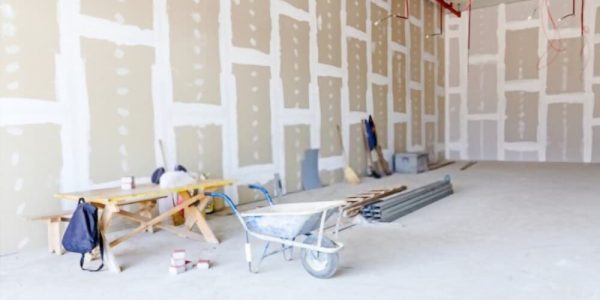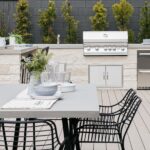Stucco cladding, a type of hand-smoothed masonry plaster made of cement, water, and sand, is a defining feature of Spanish and Mediterranean architecture. These stucco homes feature exteriors in a variety of textures, from pebbles to virtually smooth swirls, depending on the application technique, and provide long-lasting protection from the elements. But this type of stone has its drawbacks and is not suitable for all buildings. So, if your search for home draws you to that particular look, you’re thinking about stuccoing your home, or you want to keep the stucco exterior you already have, read on for a crash course.
Stucco History and Growing Popularity
The older stucco contained lime rather than cement, and because its ingredients are easily found in nature, it is one of the oldest types of natural cladding, dating back to ancient Greece. It is believed that the New Stucco construction services Los Angeles introduced stucco to Los Angeles and the southwestern United States, creating very strong walls by applying the mixture to wooden, stone, or wooden frames.
With the mass production of dry cement in the early 20th century, stucco coating entered a new era. Cement increased the workability of plaster, with longer drying times allowing builders greater freedom. However, the southwest remained the ideal location for stucco, thanks to the arid conditions and high sand content that stabilized the soil.
Attempts to install traditional stucco in more northern and eastern climates have had mixed results. In areas where the soil shifted, causing the foundations of houses to settle, cracks appeared in the stucco that allowed rain to penetrate and peel the siding from its siding. Today, the addition of polymers and other flexing agents, along with refined application techniques, have improved stucco’s resilience, making it a growing choice in the United States.
Advantages and disadvantages of Stucco
Advantages:
Stucco is attractive for several reasons, including fire resistance. A 1-inch layer of stucco provides a fire rating of one hour, meaning it will prevent fire from spreading from one side of the wall to the other for at least an hour. This makes stucco desirable for multi-family homes with strict fire codes and for those in neighborhoods where homes are built close together.
Then there are the seductive looks and shades, from muted tones to deep earth tones, which are achieved by adding shades to the mix. Traditionally, stucco was often combined with flat roofs and clay tile roofs, but people find the surface so attractive that you will now see stucco on homes with pitched roofs and combined with clay roofing materials tiles, and metals.
Disadvantages
Due to its fragile nature, stucco siding will crack if a home’s foundation settles. It is simply not the best choice in areas where the soil is rich in clay, which is known to swell and cause foundation changes.
Over time, even stucco in homes with solid foundations can develop fine cracks. While small cracks do not affect the integrity of the coating and can often be repaired without calling a professional, cracks 1/4 inch or larger are a problem. Some stucco houses built after World War II were created in a pulverized manner that did not prove to be as strong as traditional hand-smoothed stucco. Over time, these homes can be prone to multiple large cracks and/or pieces of stucco falling off, and the only real option is to remove the faulty siding and replace it with a reputable contractor.
Stucco Application Process:
Stucco is installed in layers, a time-consuming and labor-intensive process carried out by trained professionals, which is not a job for the most ambitious DIYers and therefore can be expensive. In the Southwest, where stucco contractors are skilled and plentiful, you can order it for $4-7 per square foot, but in other climates expect to pay $6-10 per square foot.
The application process depends on the structure of the house: wood-framed walls require more layers of traditional stucco than blocks or concrete. By applying the plaster in layers and allowing each layer to dry, the contractor gradually increases the thickness of the coating.
Traditional Stucco is applied in three coats to the wooden exterior walls. It starts with an “anti-scratch coating” that is spread over a metal batten affixed to the exterior cladding of a home. The rough surface allows the next layer, the “brown layer”, to adhere. The brown layer adds strength and serves as a base for the “top layer”, which can be smoothed to create a custom surface texture.
Single-layer stucco is a relatively new process that uses stucco mixed with fiberglass, applied over metal slats. Not all stucco contractors offer the single-layer process, so you may have to call to find one in your area.
Two-layer stucco is used in concrete, brick, and block walls. The existing masonry makes a scratch coating unnecessary. Instead of metal lath, a bonding adhesive is applied to the drywall before applying two coats of stucco.
Stucco Care and Maintenance:
If you already own these stucco houses, pay attention to their maintenance requirements to get the most out of this outdoor.
- If you are concerned about the foundation settling, take steps to reduce soil movement. By installing good gutters and gutters and leveling your yard so that it is clear of the foundation, you will limit soil saturation and reduce the risk of foundation movement.
- To remove mildew, mix one part of non-chlorine bleach with three parts of water and apply directly to stains with a sponge or brush. Allow the solution to penetrate the surface before rinsing with a hose.
- Keep in mind that stucco can be painted if you get tired of the color and you can probably do the job yourself. With just a little care, your stucco siding will retain its distinctive look for years to come.



